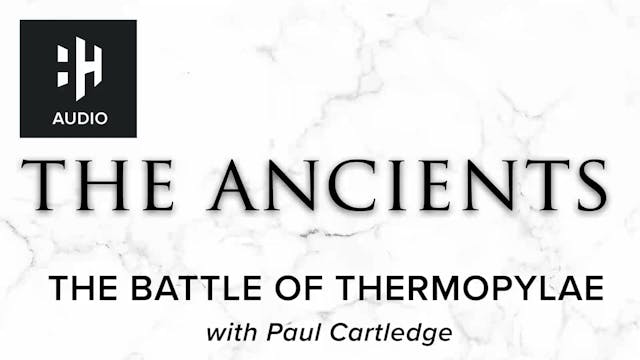🎧 'Killing for the Roman Republic'
🎧 The Ancients
•
59m
In 281/280 BC, the Hellenistic King Pyrrhus ventured to southern Italy to aid the Italiote-Greek city of Tarentum against a rising power based in central Italy. This enemy was the Romans. Over the next 150 years this civilisation would rise to become the Mediterranean superpower, winning wars against the Carthaginians, the Antigonids, Seleucids, Ptolemies and various other enemies. But why were the Roman soldiers so effective? I was delighted to be joined by Dr Steele Brand who brilliantly answered this question. Steele explained how the Roman Republican military was far from invincible. Indeed what is so striking from this period is how many devastating defeats the Romans suffered in the process - from Heraclea to Cannae. What made the Romans so extraordinary, however, was their mindset: the Roman civic ethos that was ingrained in its citizens from childhood. Steele explained how the household farm served as an ‘incubator’ for habituating citizens to Roman virtue, which in turn ensured that citizens remained willing to serve even in the wake of catastrophic military defeats. In short, it was these part-time ‘soldier farmers’ that became the nucleus of antiquity’s most famous empire. Steele is the author of 'Killing for the Republic: The Roman Way of War'.
Up Next in 🎧 The Ancients
-
🎧 Alexander the Great: The Persian Pe...
I was delighted to be joined by Professor Ali Ansari in this podcast to chat through the complicated history of Alexander the Great in the Persian narrative. A once-hated figure, overtime he was adopted into Iranian legend. This was a fascinating chat.
-
🎧 The Battle of Thermopylae
2,499 years ago one of the most famous battles in antiquity, indeed one of the most famous battles in history, was fought at the Pass of Thermopylae in central Greece. King Leonidas, his 300 (or so) Spartans and their Hellenic allies fought off against King Xerxes' mighty Persian army for three d...
-
🎧 The Antonine Wall
In c.142 AD the Emperor Antoninus Pius ordered the construction of a new wall in Northern Britain. Situated between the Firth of Forth and the Firth of Clyde it stretched the neck of modern day central Scotland and was called the Antonine Wall. Although its ‘lifespan’ was relatively short-lived, ...



